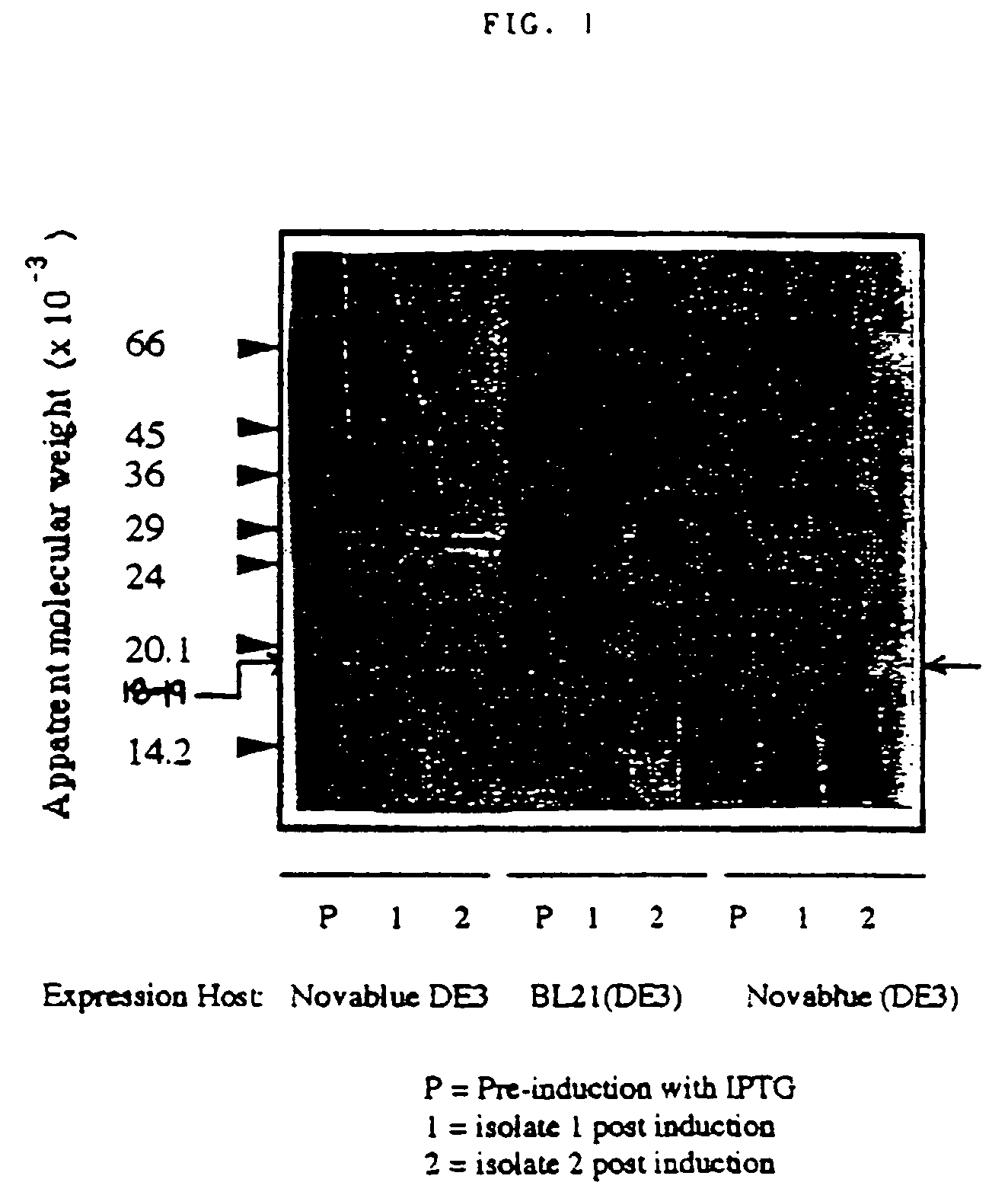Process for production of Helicobacter pylori bacterioferritin
a technology of helicobacter pylori and bacterioferritin, which is applied in the field of 1819 kda protein, can solve the problems of rapid ulcer healing and unrecognized use of recombinant species-specific antigens, and achieve the effect of treatment or prophylaxis
- Summary
- Abstract
- Description
- Claims
- Application Information
AI Technical Summary
Benefits of technology
Problems solved by technology
Method used
Image
Examples
Embodiment Construction
[0051]We have generated DNA sequence information identifying the 18-19 kDa protein as a bacterioferritin. We have also generated a recombinant 18 kDa protein and expressed this in E. coli. This recombinant protein was found to be recognized immunologically by antisera from individuals positive for antibody to the 18 kDa helicobacter bacterioferritin. This recombinant protein will form the basis for a putative vaccine for H. pylori. FIG. 1 is a Western Blot analysis of the recombinant 18 kDa protein expressed in E. coli.
Methods Employed
[0052]Cloning and expression of the Helicobacter pylori 18 kDa gene.
[0053]Deoxyribonucleic acid (DNA) was extracted from Helicobacter pylori as described by Silhavy et al.*(1984).
[0054]Oligonucleotides (or “primers”) specific for the 5′ and 3′ termini of the 18 kDa gene were generated. The forward or 5′ oligonucleotide (designated HP18CF) was modified to incorporate an Nde 1 restriction endonuclease site. Additional modifications were made to increase...
PUM
| Property | Measurement | Unit |
|---|---|---|
| molecular weight | aaaaa | aaaaa |
| volume | aaaaa | aaaaa |
| volume | aaaaa | aaaaa |
Abstract
Description
Claims
Application Information
 Login to View More
Login to View More - R&D
- Intellectual Property
- Life Sciences
- Materials
- Tech Scout
- Unparalleled Data Quality
- Higher Quality Content
- 60% Fewer Hallucinations
Browse by: Latest US Patents, China's latest patents, Technical Efficacy Thesaurus, Application Domain, Technology Topic, Popular Technical Reports.
© 2025 PatSnap. All rights reserved.Legal|Privacy policy|Modern Slavery Act Transparency Statement|Sitemap|About US| Contact US: help@patsnap.com

